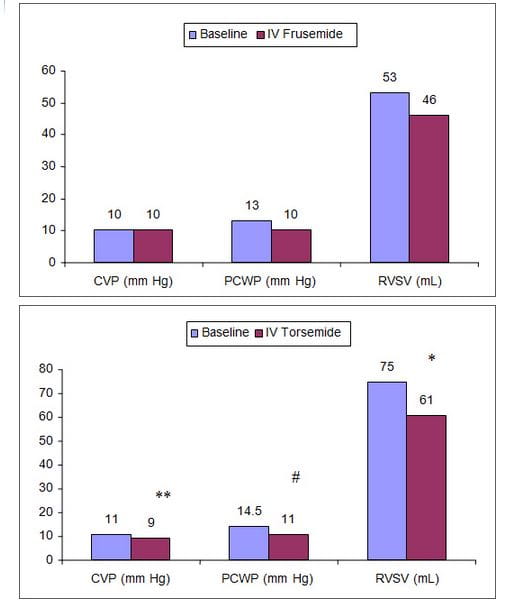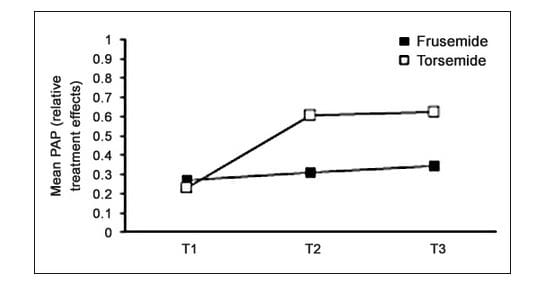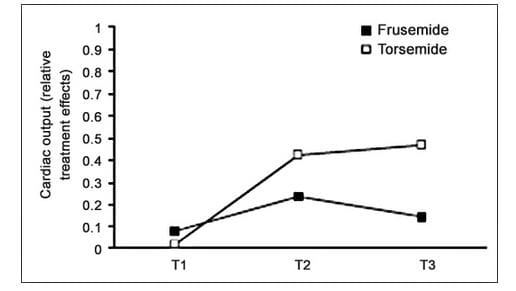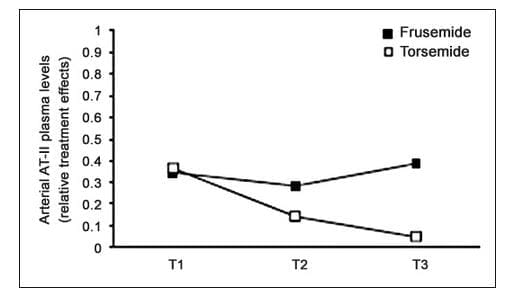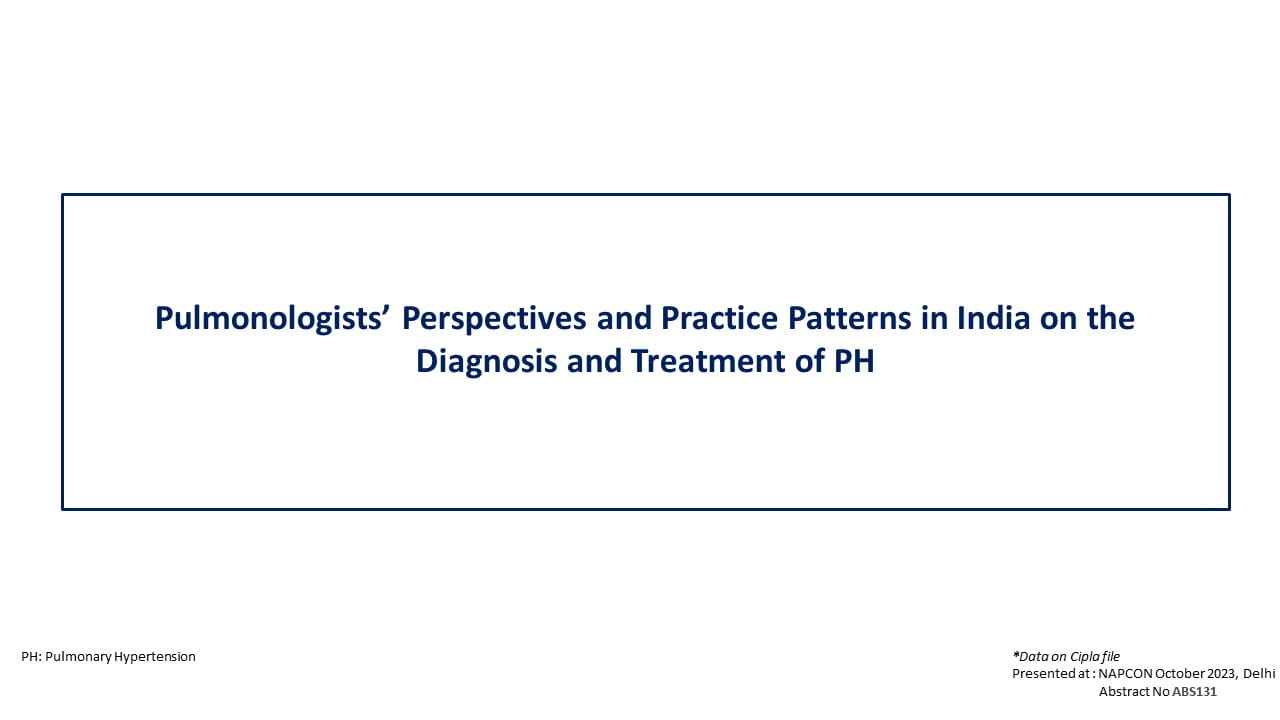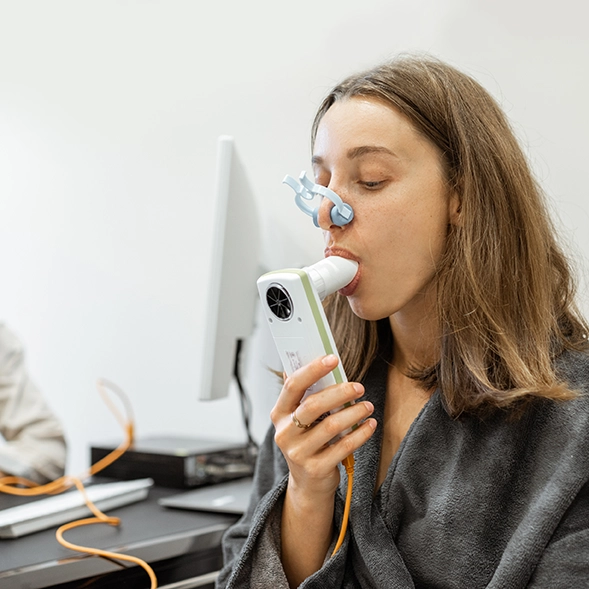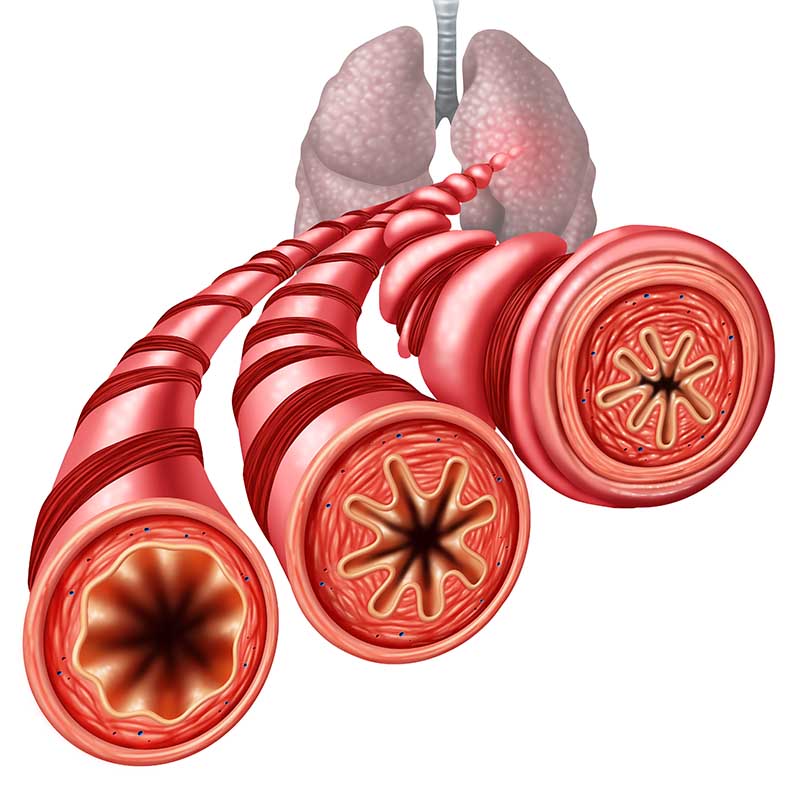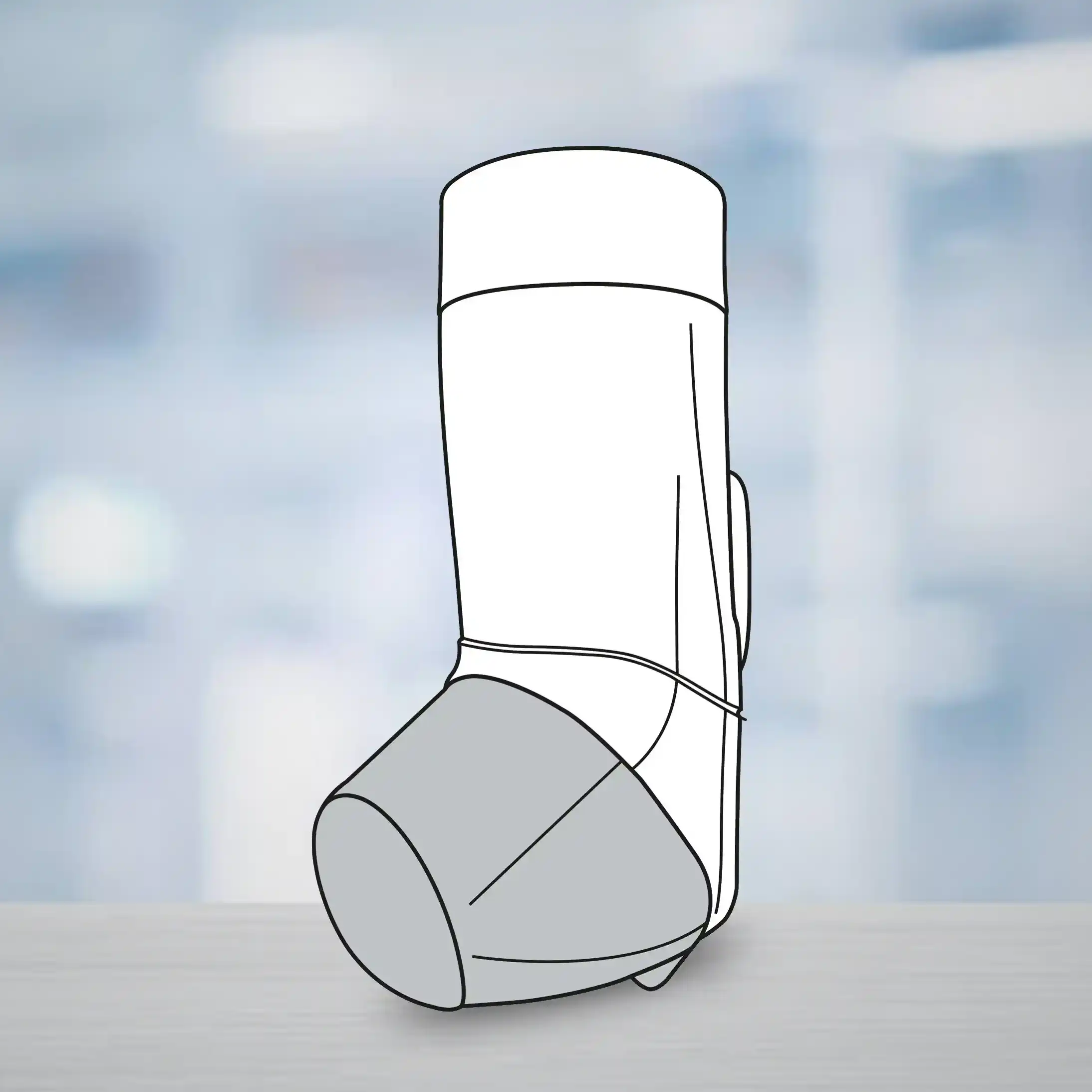Currently, it is unclear whether loop diuretics influence pulmonary vasculature in patients with secondary pulmonary hypertension.
Torsemide vs Frusemide in Secondary Pulmonary Hypertension
Background
Aim
To investigate the hemodynamic effects of torsemide vs. frusemide after intravenous (IV) and oral administration in patients with secondary pulmonary hypertension.
Patients
21 patients with secondary pulmonary hypertension scheduled for elective valve replacement and/or coronary artery bypass graft surgery
Study Groups
- 40 mg IV frusemide, followed 5 minutes later with frusemide 80 mg orally (N= 11)
- 20 mg IV torsemide, followed 5 minutes later with torsemide 20 mg orally (N = 10)
Follow-up Duration
60 minutes after oral administration of torsemide/frusemide
Results
- Unlike frusemide IV, torsemide caused a significant improvement in hemodynamic parameters (Figure 1).
Figure 1. Effect on hemodynamic parameters with IV torsemide and IV frusemide
* p= 0.017 vs. baseline; # p=0.005 vs. baseline; ** p=0.0.28 vs. baseline
CVP=central venous pressure; PCWP=pulmonary capillary wedge pressure; RVSV=right ventricular stroke volume
- With respect to time, mean pulmonary arterial pressure and cardiac output increased to a significantly greater extent in the torsemide group compared with frusemide group (Figure 2 & Figure 3)
Figure 2. Effects of treatment on mean pulmonary arterial pressure (PAP). Data are presented as adjusted relative effects of the two treatements at T1 (after IV administration), T2 (prior to oral administration), and T3 (after oral administration); p = 0.16 (group), p = 0.04 (time).
Figure 3. Effects of treatment on cardiac output. Data are presented as adjusted relative effects of the two treatment at T1 (after IV administration), T2 (prior to oral administration), and T3 (after oral administration); p = 0.03 (group), p = 0.001 (time).
- Arterial plasma angiotensin II levels were significantly increased in the frusemide group as compared with torsemide group (Figure 4).
Figure 4. Effects of treatment on arterial plasma angiotensin-II (AT-II) levels. Data are presented as adjusted relative effects of the two treatments at T1 (after IV administration), T2 (prior to oral administration), and T3 (after oral administration); p = 0.031 (group), p = 0.04 (time).
Safety
No serious adverse events associated with study medications occurred within the entire study period.
Conclusions
- In patients with secondary pulmonary hypertension, torsemide causes a significant increase in cardiac output over time.
-
Significant increase in arterial plasma angiotensin II levels with frusemide, which possibly occurs due to activation of the renin angiotensin system, might aggravate pulmonary hemodynamics in heart failure and other clinical conditions.
Clin Drug Invest 2008; 28: 17-26


